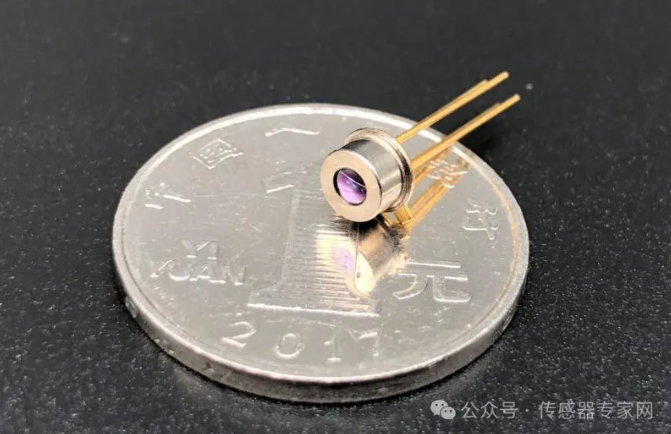In the field of modern technology, sensors are important tools for information acquisition, with a wide variety of types and diverse functions. Among them, infrared thermopile sensors have been widely used in many fields due to their unique non-contact measurement, high precision, and fast response characteristics. This article will delve into the working principle, advantages, and specific applications of infrared thermopile sensors in different fields, in order to provide readers with a comprehensive technological perspective.

Working principle and advantages
The working principle of infrared thermopile sensors is based on the thermoelectric effect, which means that when two conductors of different materials are connected together and heated, a potential difference will be generated at the contact surface, resulting in current. Infrared thermopile sensors detect the infrared radiation emitted by objects, convert it into electrical signals, and achieve non-contact temperature measurement.
The advantages of infrared thermopile sensors are mainly reflected in the following aspects: firstly, non-contact measurement, which avoids the errors and damages that may be caused by traditional contact measurement; The second is high precision, which can accurately reflect the true temperature of the object; The third is fast response, which can capture temperature changes in real time; Fourthly, it has broad applicability and can be used to measure the temperature of objects of various shapes and sizes.
Specific application areas
1. Medical industry
In the medical field, infrared thermopile sensors are widely used in temperature measurement devices, such as forehead thermometers, ear thermometers, etc. These devices can quickly and accurately measure human body temperature, making them particularly suitable for large-scale temperature screening during epidemics, reducing the risk of cross infection. In addition, with the rise of wearable devices, infrared thermopile sensors have also been integrated into these devices for real-time monitoring of users' body temperature and health status, providing the possibility for early detection of diseases.
2. Industrial sector
In industrial environments, infrared thermopile sensors can be used to monitor the temperature of key components such as motors and bearings, achieving overheating warning and fault prevention. This helps to ensure production safety and reduce losses caused by equipment failures. Meanwhile, in the power system, infrared thermopile sensors can be used for thermal imaging analysis to evaluate the operating status of the equipment by measuring its temperature distribution, promptly identifying potential problems, and ensuring the stable operation of the power system.
3. Smart Home
In the field of smart homes, infrared thermopile sensors also play an important role. They can be integrated into smart thermostats, air conditioners, and other household appliances, automatically adjusting the working status of the devices according to the ambient temperature, improving the comfort of home life, and achieving energy-saving effects. In addition, in the fire detection system, infrared thermopile sensors can issue alarms in the early stages of a fire by monitoring changes in ambient temperature, reminding users to take timely measures to protect home safety.
4. Environmental monitoring
Infrared thermopile sensors can also be used to measure environmental parameters such as atmospheric temperature and radiation intensity, providing data support for environmental protection and climate research. In the fields of wind power generation, photovoltaic power generation, etc., infrared thermopile sensors are also used to monitor the temperature of solar panels, inverters, distribution cabinets and other equipment to ensure the stable operation of the system.
summary
In summary, infrared thermopile sensors play an important role in various fields such as medical, industrial, smart home, and environmental monitoring due to their advantages of non-contact measurement, high precision, fast response, and wide applicability. With the continuous advancement of technology and the expansion of the market, the application fields of infrared thermopile sensors will
further expand. In the future, we can expect infrared thermopile sensors to demonstrate their unique advantages and potential in more fields, contributing to the construction of a more intelligent and safe society. Meanwhile, with the rapid development of technologies such as the Internet of Things and big data, infrared thermopile sensors will be deeply integrated with these technologies to provide more intelligent and precise solutions for various industries.
Source: Sensor Expert Network. Reproduction of this article is to convey more information. If there is any infringement, please contact us for deletion



